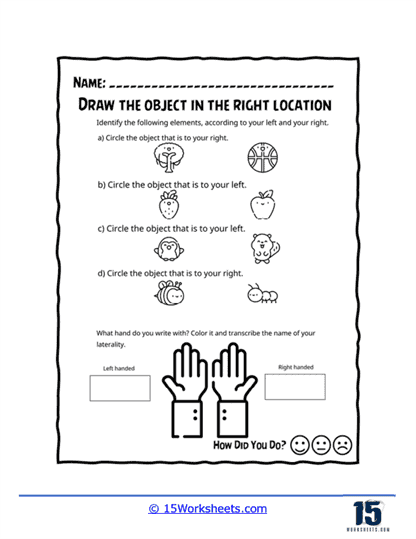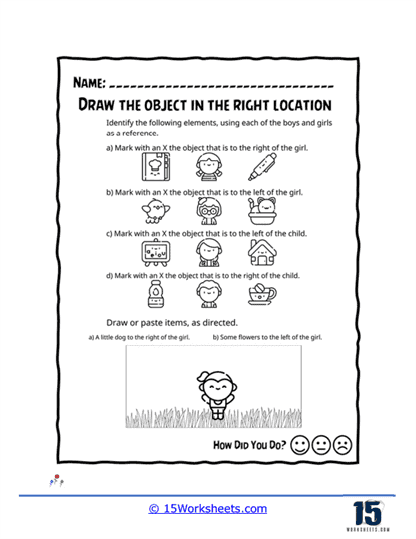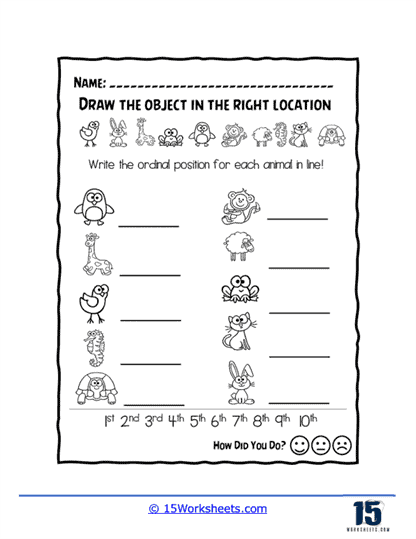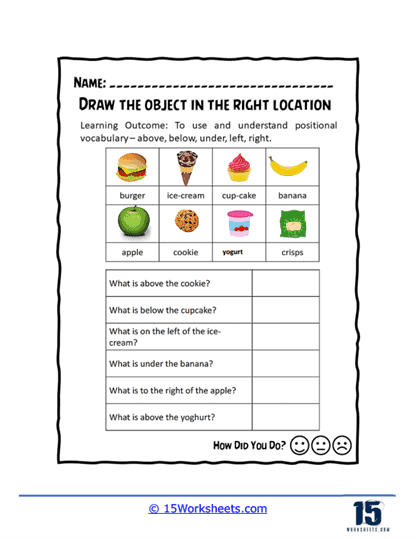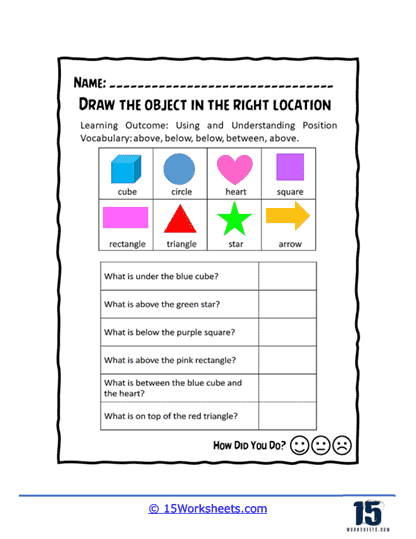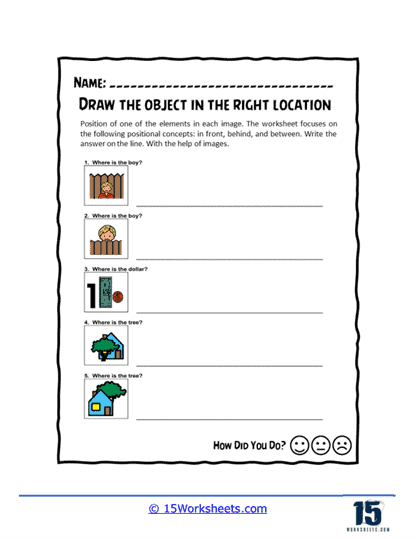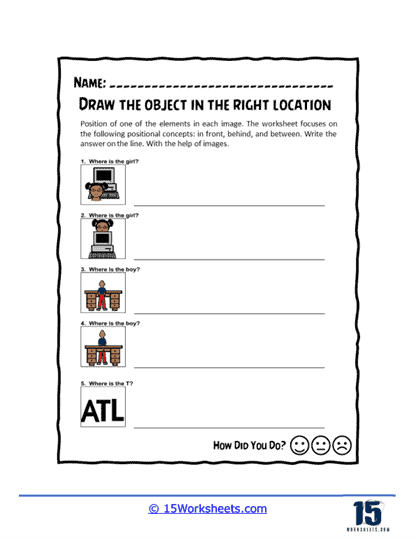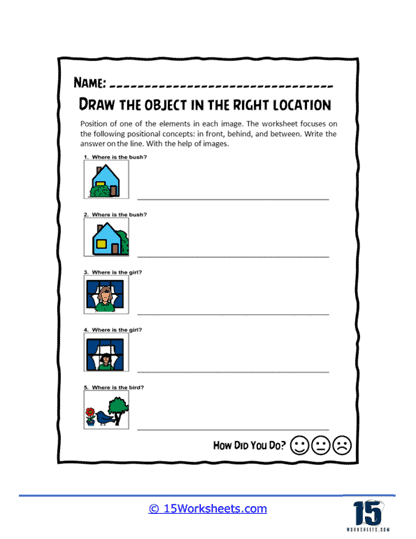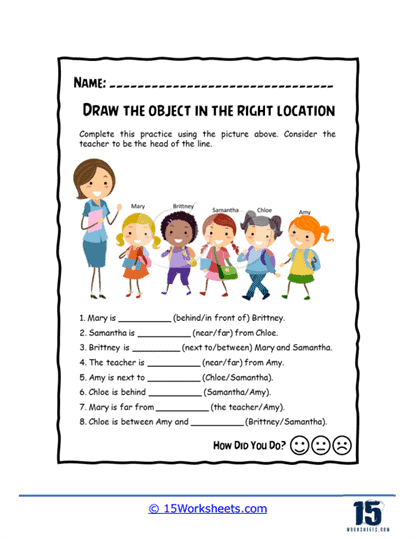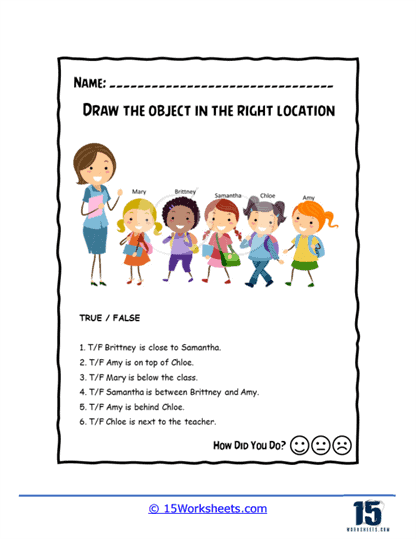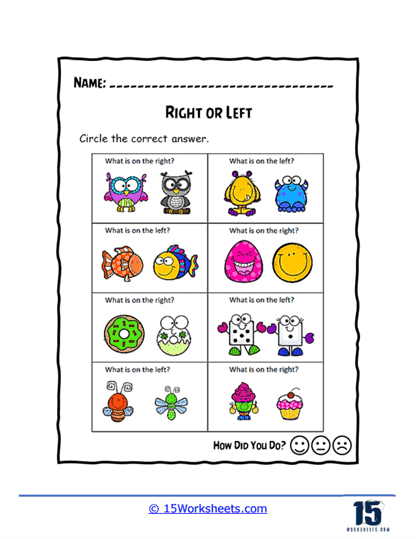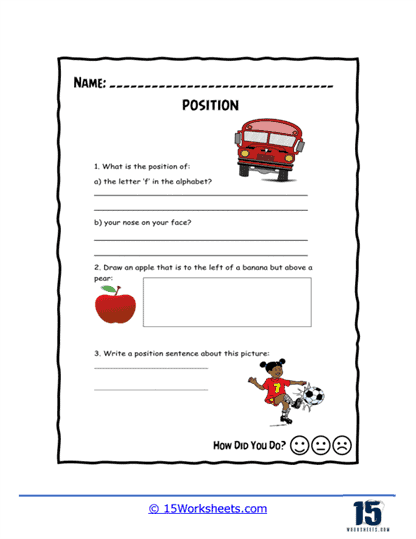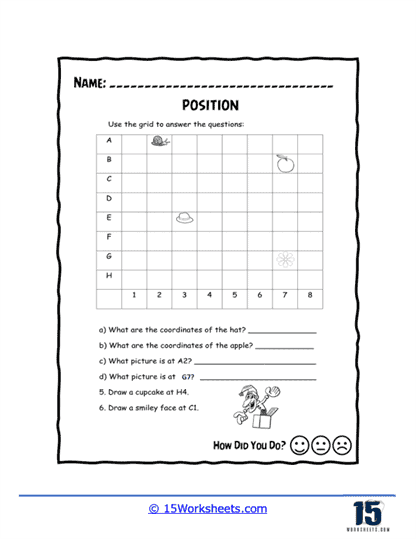Object Location Worksheets
About These 15 Worksheets
Our object location worksheets can be used to help students, particularly young children, understand and identify the location or position of objects relative to other things. These worksheets involve activities related to prepositions of place such as “in”, “on”, “under”, “next to”, “between”, “above”, “below”, etc. For example, a worksheet might have a picture of a box with a ball next to it and a teddy bear under it. The accompanying questions might ask the student to identify where the ball is in relation to the box or where the teddy bear is in relation to the box.
These worksheets are valuable tools in the development of spatial reasoning skills, which are important in everyday life and in fields such as geometry, physics, engineering, art, and more.
They may also involve map reading exercises, which are more complex and involve understanding object locations on a larger scale. This might involve identifying the location of landmarks on a city map or geographical features on a country map. These exercises help develop understanding of geography and navigational skills.
How Do You Describe The Location of an Object?
To describe the location of an object, you can use position words, also known as prepositions, which indicate the spatial relationship between the object and other reference points. Here are some tips on how to describe the location of an object effectively:
Choose a Reference Point – Select a clear reference point that helps define the object’s location. The reference point can be another object, a person, or a specific area or landmark.
Use Position Words – Utilize appropriate position words or prepositions to describe the object’s location relative to the reference point. Some common position words include above, below, beside, between, in front of, behind, near, far, inside, outside, on, and under.
Be Specific – Provide additional details to help clarify the object’s location, such as distance, orientation, or other distinguishing features.
Use Cardinal Directions – If necessary, incorporate cardinal directions (north, south, east, and west) to give a more precise description of the object’s location, especially when describing larger areas or outdoor locations.
Describe the Object – Briefly describe the object itself, including its color, shape, size, or any other noticeable characteristics to help the listener or reader easily identify the object you are referring to.
Here’s an example of describing the location of an object:
“The red ball is on the table, near the window, slightly to the left of the vase.”
In this example, the reference point is the table, and the position words used are “on” and “near.” The description also includes additional details such as the color of the ball (red) and its orientation in relation to the vase (slightly to the left).
By following these tips and using clear language, you can effectively describe the location of an object to help others understand its position in a given space.

